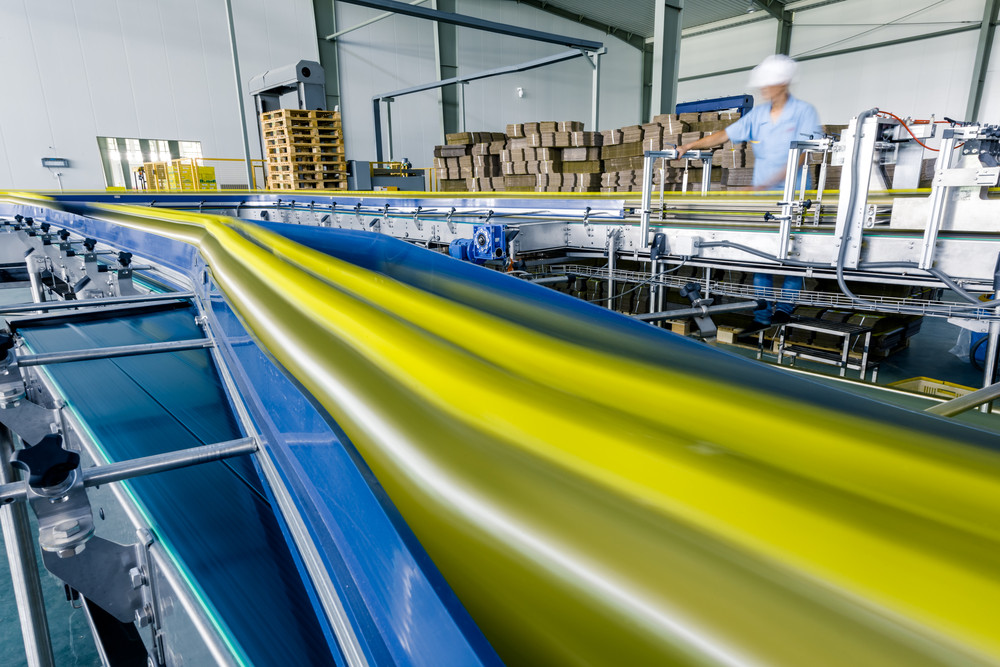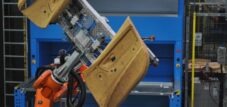Efficiently supplying small components
Whether companies in the automotive and manufacturing industries, electrical engineering, oil & gas, or medical technology: this solution is aimed at medium-sized businesses and corporations with series production and a high degree of product variety. For all these companies, the smooth supply of spare parts to the production lines is of paramount importance. However, the space constraints prevalent in many factories often hinder this.
Often, the parts are stored further away in shelving units or high-bay warehouses and transported to the assembly line when needed. At first glance, this appears to be a cost-saving technique, but it requires long distances and a large number of personnel. Furthermore, it proves to be quite inflexible when the product range changes and is not optimal in terms of the accuracy of access.
The alternative is to convert to an automated supply system that delivers the required small parts efficiently and precisely. For such low-volume items, automated small parts warehouses (AS/RS) are often the first choice. These systems are usually designed for extensive assortments with 4,000 or more containers. This is also the disadvantage of these systems, as their size usually prevents them from being located directly next to the assembly lines, thus increasing the travel time of the goods.
Order picking at the assembly line
The goal is therefore to find a model that is compact enough to be placed even in confined spaces and that also reliably and quickly picks the required items. The following comparison illustrates the advantages of such a solution, using as an example the LR 35 Vertical Buffer Module recently introduced by the intralogistics manufacturer Kardex Remstar.
The system is an automated vertical buffer and picking warehouse for storing small parts in containers and trays. It differs from a conventional AS/RS in its significantly higher picking performance, achieving up to 250 double cycles per hour. Due to its design, it requires only about one-third of the energy consumption of conventional AS/RS.
The payload per tray is 35 kg. The unit accommodates AS/RS-compatible containers with external dimensions up to 600 x 400 mm and up to 640 x 440 mm. Mixed loading of different sizes and heights is possible. Due to its small width (from 1.92 m) and height (from 2.5 m), it can be positioned relatively close to an assembly line, minimizing travel times compared to larger AS/RS units.
Order picking with conventional rack storage vs. automated system
Initial situation
In shelving or pallet racking, manufactured components are often stored in containers of varying sizes, leading to inefficient storage space utilization because the shelves are not used optimally in either depth or height. Fill levels of 60 to 70 percent are therefore more the rule than the exception. When orders are called, they are processed sequentially, meaning that order pickers have to visit a large number of storage locations, possibly the same ones several times in quick succession.
Besides long distances and the resulting slow retrieval times, this creates the risk of incorrect picks, for example, due to misreading or accidentally removing an item from an adjacent storage location.
Effects
This type of order picking is time-consuming and complex. It necessitates that assembly orders be prepared well in advance to ensure uninterrupted production. Furthermore, incorrectly picked orders lead to delays in the entire process and thus to considerable costs – if not even to the installation of entirely incorrect parts.
When new manufactured parts are stored, this usually leads to complex and time-consuming rearrangements of the shelving. In addition, the entire order picking process is physically demanding and unergonomic for employees (long distances, heavy loads, bending, lifting).
To address this problem, static storage systems in the warehouse can be replaced by automated, dynamic units. Due to the manageable dimensions of the small Vertical Buffer Module, parts can be stored close to the assembly area, from where order containers are transported directly to the assembly stations via conveyor technology as soon as they are requested. Furthermore, the small components can be stored in container types of varying dimensions, thus optimizing the utilized storage volume.
Automation and direct integration of the new storage system with the assembly line reduce the need for personnel in order picking. The required items are automatically and ergonomically provided to the order picker according to the "goods-to-person" principle. This minimizes the picker's walking distances, promotes occupational health, and simultaneously increases speed. The risk of packing errors is also significantly reduced by the automated system. To further enhance precision, each order container is equipped with a put-to-light indicator.
The optical indicators at the picking opening ensure error-free and fast order picking. Additional picking information, displayed on a screen, shows the picker precisely which item and quantity are to be retrieved from which storage location. The picker takes the required parts from the container and confirms the removal using a confirmation button located directly at the picking opening. Simultaneously, the picking cart displays which order container the picked item belongs to. The picker places the item in the designated order container and confirms this on the put-to-light display. If the same item is required for multiple orders within a batch, the employee picks the total quantity of the item and distributes it among the corresponding order containers according to the specified quantities. This software-controlled batch picking minimizes the number of machine movements required by the warehouse equipment.
Once an order from the batch has been fully picked, the employee is visually notified, and simply confirms this with the push of a button. The order container is now ready for further processing in assembly. If minimum stock levels are reached during the picking process, the vertical buffer's warehouse management software informs the customer's higher-level ERP system. Items are stored concurrently with the picking process at the manual access port or the conveyor connection. This process is analogous to retrieval, but in reverse.


